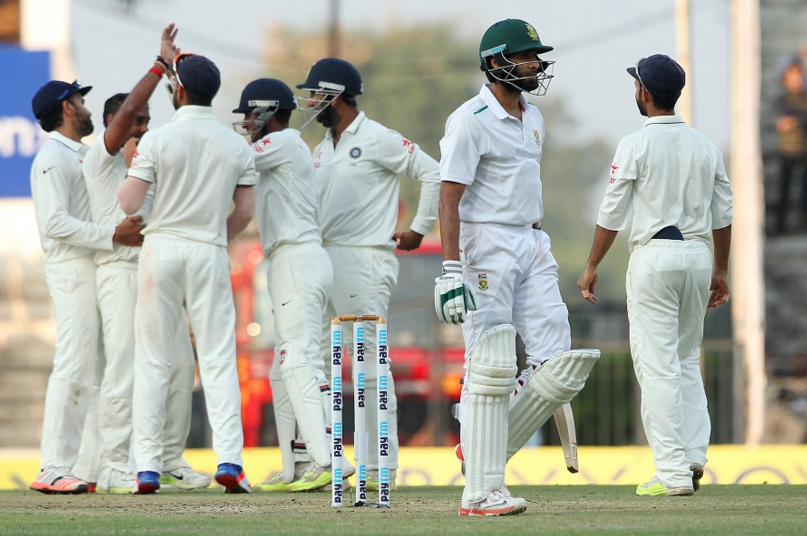Five things we learned from South Africa’s 124-run loss in the third Test against India in Nagpur, which ended their nine-year unbeaten run away from home.
The pitch
It was the major talking point of the game and the series so far. India have defended it and South Africa have been polite in not criticising it, but they are no doubt disappointed, maybe even angry, about the surfaces prepared for this series where no Test has reached a full three days of play. India have a right to prepare pitches to suite their players and style of play even if it’s not beneficial for Test cricket in general. Until the ICC puts measures in place to monitor the preparation of pitches, it will continue. The historic day/night Test between Australia and New Zealand in Adelaide also only lasted three days and it has even happened on occasion in South Africa. However, it shouldn’t happen in every Test of a series.
The spinners
India have better spinners than South Africa. The gulf in quality between the two side’s spinners is ultimately what won India the series in spin friendly conditions. Ravi Ashwin, Ravindra Jadeja and Amit Mishra were more consistent in planting the ball in good areas than Imran Tahir and Simon Harmer. Hashim Amla made a mistake in waiting 24 overs in India’s second innings before giving Tahir, who went on to take five wickets, a bowl. The lead had grown to 218 by then. There is clearly a lack of trust in Tahir, especially when Amla has no runs to play with, but everyone knows Tahir can be more expensive than holding spinners. Why pick him in the first place if you’re not going to gamble with him when you desperately need wickets?
The batsmen
This will be a series to forget for all batsmen involved. Techniques have been tested, application and patience scrutinised and averages negatively affected. Not one century has been scored in the series so far. AB de Villiers has scored two fifties with the highest score of 85 for both teams, while Murali Vijay has the most runs (195) in five innings. Indian team director Ravi Shastri, in defending the pitches in Mohali and Nagpur, blamed the batsmen’s struggles on the impact of ODI cricket and poor application. Graeme Pollock has similar feelings regarding the role ODI batting has had on Test innings’ and while they may have a point, there is no denying that the surface made it extremely difficult, especially against a good spin attack. No wonder Hashim Amla called it the toughest three days of his Test career.
The batting order
Using a nightwatchman is pointless. Twice Imran Tahir was used as a nightwatchman in this Test and twice he got out before the end of the days play, forcing Hashim Amla to come out and face the music anyway. The encouraging thing about it was the apparent recognition within the team that Amla needed to bat at No 3 and Faf du Plessis at No 5, which is what would have happened if a nightwatchman wasn’t used. While Du Plessis should definitely bat at No 3 in ODI cricket, he is perhaps better suited to the No 5 role in the longest format of the game. It means South Africa’s two best batsmen, Amla and AB de Villiers, occupy the No 3 and 4 positions, which is how it should be.
The injuries
South Africa have suffered due to injuries to key players in this series, primarily in the bowling ranks where Vernon Philander has returned home with torn ankle ligaments and Dale Steyn has missed two Tests due to a groin injury. While India would probably still have won in Nagpur, one can’t help but wonder what impact Steyn would’ve had in those conditions. Morne Morkel had an excellent game and bowled well, but Steyn is an even better exponent of reverse swing. The two of them together could have bowled India out for a lot less than the 215 they scored in their first innings, but it doesn’t matter now. It would have still been up to the batsmen to do well in those conditions.







